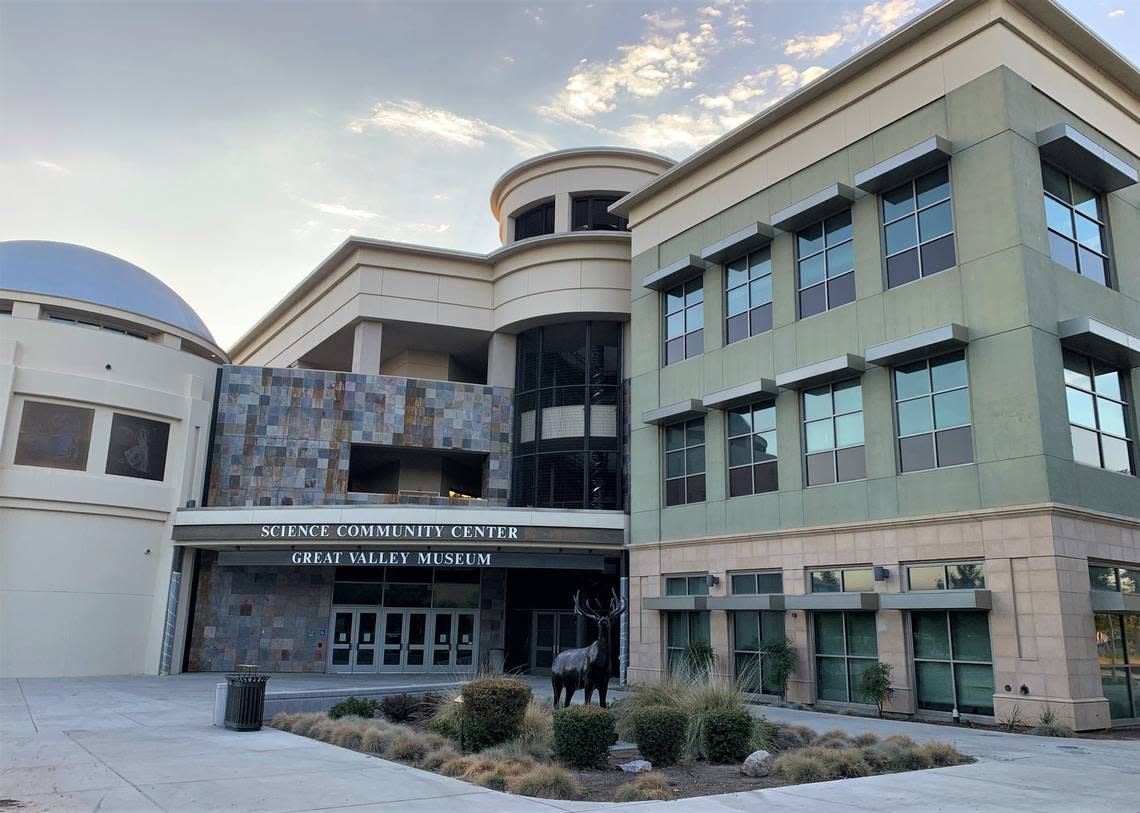Modesto Junior College has saved students $10 million in textbooks. Here’s how

One of the major financial burdens for college students is the cost of textbooks. In fact, California collegians can expect to spend almost $1,000 per year on books and materials.
In five years, Modesto Junior College has saved thousands of students over $10 million in textbook costs. Through the college’s Zero Textbook Cost (ZTC) initiative, instructors can use open educational resources to teach their classes.
Open educational resources are freely accessible and openly licensed materials. These resources include textbooks, labs, videos, assignments and quizzes.
In 2021, Gov. Gavin Newsom allocated $115 million to California’s community colleges to establish ZTC programs and create open educational resources. This move not only promises more affordable education for millions of students but also positions California as a model for other states. MJC is one of the many California community colleges that have received state grants to implement ZTC program pathways.
About 38.6% of courses at MJC are ZTC. Since fall 2019, when the initiative began at the college, 149,007 students have enrolled in these courses.
MJC also offers Low Textbook Cost (LTC) courses, which use textbooks under $35. The amount was chosen based on the students’ suggestion of how much is too much to spend on course materials.
“It’s such an important initiative to be able to allow students equity,” said Iris Carroll, a librarian at MJC.
Faculty members at MJC are trained to find open education resources in the public domain and build their courses by incorporating different sources.
About 250 faculty members have gone through the training. Instructors receive a $1,200 stipend for doing the three-week online training and getting their course to be ZTC.
“It’s a big win for faculty who have come aboard,” Carroll said.
Shirley Miranda Brenes, an English professor at MJC who has helped lead the initiative, said ZTC and LTC classes often fill up first.
MJC has 29 ZTC pathways students can enroll in to get their degree without having to buy a single textbook.
On average, California college students spend $938 per year on textbooks and materials, according to the California Student Aid Commission’s 2021-2022 Student Expenses and Resources Survey.
This fall, the whole chemistry program at MJC is going to be ZTC, said Tara Bunag, a chemistry professor. In other words, there will be a fully zero textbook-cost chemistry associate degree program at the college.
All of Bunag’s classes are ZTC as lab materials and textbooks are free, and calculators can be borrowed.
If students want a physical version of their books, they can purchase a printout copy, which can be about $30. They also can choose to print out only certain pages or chapters of the book.
Bunag said MJC has been trying to connect with bookstore vendors to make the process of getting students open educational resource materials more streamlined.
Before the pandemic, most students preferred physical copies of their books. But now they’re more used to doing things electronically, Bunag said.
Katelyn Turley, a recent graduate of MJC, said she doesn’t miss having physical textbooks because e-books are more convenient. With her textbooks accessible on her phone, she no longer needed to carry around big books when commuting to campus.
“Also, it’s just free, and who doesn’t like things free?” Turley said.
Turley, who majored in microbiology, said that typically when she’d buy a textbook, her class barely used it.
“It’s already expensive, so having not to buy a textbook is wonderful,” she added.
Expanding accessibility and equity
Many students aren’t able to have their textbooks and resources on the first day because their financial aid check may not have arrived yet, Brenes said.
She had one student thank her because she didn’t have to worry about paying for a book and could focus on paying rent instead.
“I think more and more faculty are understanding that there are a lot of things that we cannot control in terms of the students’ life. We cannot control how much they pay rent. We cannot control homelessness, food insecurities, but textbooks we can control,” Brenes said.
Carroll said the overwhelming response from students has been positive because it saves money and makes education more accessible.
She added that a lot of MJC students are homeless, — about 14.5% — so this program will increase equity. “I mean, they lead really hard lives, so anything we can do to make learning more accessible for them, the better they are,” Carroll said.
Customizing the course materials
The advantages of open educational resources is that students can access the materials from day one, and instructors can tailor the textbook to their needs or edit it when it has errors.
“I actually have more students who have the book on day one than I normally would because everyone can access it,” Bunag said.
She has implemented open pedagogy by encouraging students to create their own educational resources relevant to chemistry in Modesto.
For her environmental chemistry class, students will write about the agricultural chemicals used in Modesto — like the chemicals used in processing almonds.
“That’s a lot more meaningful for them than reading about some random place somewhere halfway around the world,” Bunag said.
Challenges
One challenge for faculty is the time factor and the learning curve in using open educational resources.
Some teachers have been using the same textbook their whole career, so learning how to find these materials can be challenging, Carroll said.
She added that the pandemic has made the transition to using e-books a lot easier for students and faculty alike.
Brenes said some instructors have been hesitant to join because it is harder to find open education resource materials for some technical classes. Some engineering classes may require specific manuals that don’t exist in the open domain.
Another downside is that using online textbooks requires Wi-Fi not every student has access to, said Turley.


